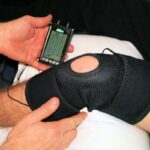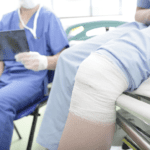Millions of Americans have or will get osteoarthritis, known as OA. It happens when the cartilage in joints breaks down causing limited mobility, pain, and swelling. Key risk factors are genetics and age.
We can’t keep from getting older and we can’t change our genetics, but there are some things that can help you reduce your risk.
Keep the Weight Off
Those extra pounds are the biggest risk factors for osteoarthritis. Every bit of extra weight puts added stress on the joints which can make the cartilage deteriorate faster. Each pound puts about four pounds of stress on the knees and increases pressure on hip joints.
Physical activity is one of the best ways to treat or help prevent osteoarthritis. According to the Arthritis Foundation, 30 minutes of moderately intense exercise five times a week can keep joints healthy and can strengthen the muscles that support and stabilize the hips and knees.
Low-impact exercise can help keep the weight off and can improve joint health. Adding strength and resistance training to aerobic exercise can make a difference.
It doesn’t have to be at a gym. Go for a walk, get out in the garden, clean the house; all have benefits. Just make sure if things start to hurt, stop the activity.
Get Rest
Taking it easy after exercise can help joints if they are swollen. Overuse of joints can increase OA risk. If something hurts, ice it for sudden or chronic pain or for inflamed joints. Heat is good for the pain that is sore and achy.
Make sure you’re also getting enough sleep. Fatigue can increase pain. Your body needs sleep to heal and protect itself.
Control Blood Sugar and Eat Right
Diabetes may play a role in the development of osteoarthritis. High glucose levels can speed up molecules that stiffen cartilage and trigger inflammation so control your blood sugar.
Drink lots of water because hydration keeps the joints lubricated, which can help prevent osteoarthritis.
Protect Yourself
If something injures the cartilage, it doesn’t heal very well. An injured joint is more likely to develop arthritis than one that was not injured. So, protect your joints. Wear protective gear like padding for sports.
Also, make sure your shoes are good and provide plenty of support. Look for breathable material, good arch support, and a padded heel. Proper shoes will provide shock absorption and help stabilize your knees.
Make sure to warm up and stretch before exercise and cool down after, and if you can, exercise on a soft and flat surface.
If the pain is persistent or you’re stiff in the morning for more than ten minutes, see a doctor. The professionals at B3 Medical can help diagnose and treat osteoarthritis. Contact us today to schedule a free consultation.



























